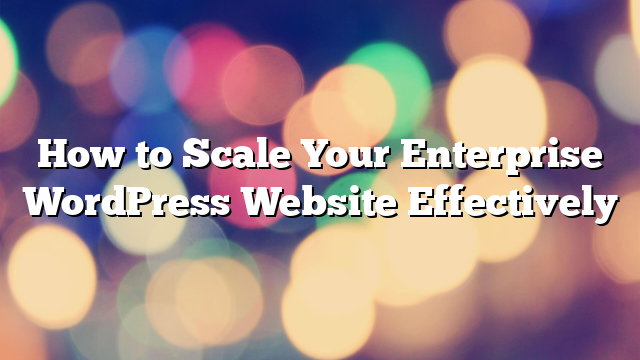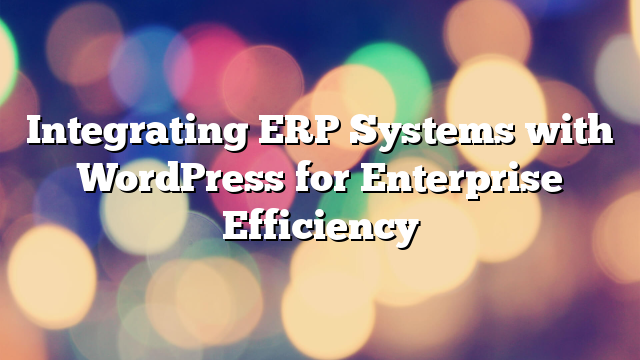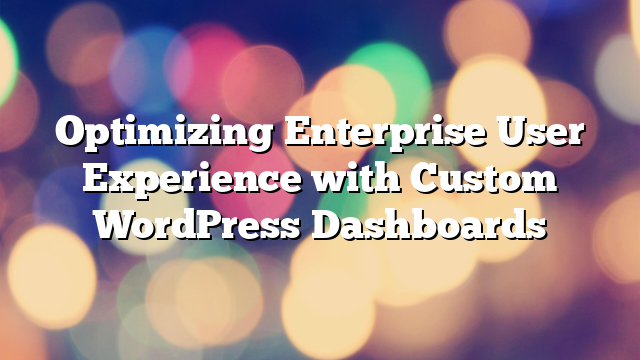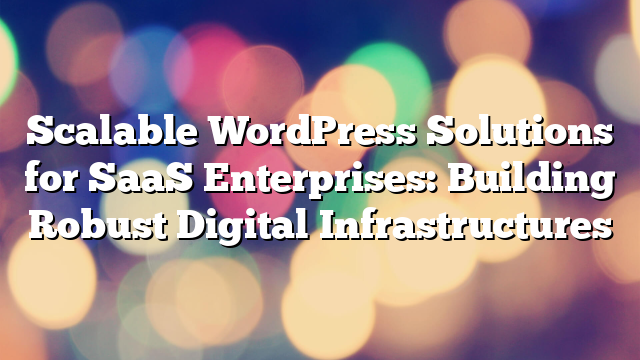How to Scale Your Enterprise WordPress Website Effectively
14.01.2025

Enterprise websites built on WordPress need to handle high traffic volumes, complex functionality, and rapidly growing content without compromising on performance or user experience. Scaling your WordPress site is essential to meet the demands of a growing business and maintain competitive performance. In this article, we’ll explore the best practices and tools for scaling your enterprise WordPress website effectively.
1. Invest in High-Performance Hosting
The first step to scaling your WordPress site is choosing a hosting provider that can handle enterprise-level requirements. Look for managed WordPress hosting solutions that offer robust server infrastructure, scalability, and advanced features like load balancing and automatic scaling. Cloud hosting providers such as AWS, Google Cloud, or Azure are excellent options for enterprise websites.
These hosting solutions provide the flexibility to scale your resources dynamically, ensuring your website can handle traffic surges without downtime.
2. Use a Scalable Architecture
Building your website on a scalable architecture ensures it can grow as your business expands. This involves separating core functionalities into modular components and using scalable technologies like:
- Headless WordPress: Decouple the WordPress backend from the frontend to allow more flexibility and scalability with modern frameworks like Next.js or React.
- Microservices: Break down your website’s functionality into smaller, manageable services that can scale independently.
- Database Scalability: Use solutions like database replication or clustering to manage increasing data loads efficiently.
By implementing these strategies, your WordPress site will be better equipped to handle the complexities of enterprise-level operations.
3. Leverage a Content Delivery Network (CDN)
A CDN is critical for scaling an enterprise website. CDNs distribute your website’s static assets (like images, CSS, and JavaScript) across a network of servers worldwide. This reduces latency by serving content from the server closest to the user, improving load times and ensuring consistent performance globally.
Popular CDN services include Cloudflare, Akamai, and StackPath. By integrating a CDN, your WordPress site will be able to handle higher traffic volumes without compromising speed or reliability.
4. Implement Advanced Caching Techniques
Caching is a cornerstone of scalable WordPress websites. It reduces server load by storing and serving static versions of your web pages. For enterprise WordPress sites, advanced caching techniques include:
- Full-Page Caching: Speeds up page loads by delivering pre-rendered HTML versions of your pages.
- Object Caching: Stores database query results to reduce the time needed to retrieve information.
- Edge Caching: Stores content closer to the end user, often in conjunction with a CDN.
Plugins like WP Rocket and W3 Total Cache can automate caching processes and significantly enhance performance.
5. Optimize Your Database
As your website grows, so does your database. Regular database optimization is essential to ensure your WordPress site remains fast and responsive. Use tools like WP-Optimize to clean up unnecessary data, defragment tables, and streamline database performance.
For enterprise-level scalability, consider using a managed database service that supports replication, clustering, and automatic scaling, such as Amazon RDS or Google Cloud SQL.
6. Adopt Load Balancing
Load balancing distributes incoming traffic across multiple servers to prevent any single server from becoming overwhelmed. This is particularly useful during traffic spikes, such as product launches or promotional campaigns. Load balancers ensure high availability and consistent performance by routing traffic efficiently.
Many cloud hosting providers offer integrated load balancing solutions, making it easier to implement this critical scalability feature.
7. Monitor and Optimize Performance
Continuous monitoring is essential for scaling your WordPress site. Tools like New Relic, Google Lighthouse, and Pingdom help you track performance metrics, identify bottlenecks, and make data-driven optimizations. Key areas to monitor include:
- Page load times
- Server response times
- Error rates
- Database query performance
By staying proactive, you can address performance issues before they affect user experience.
8. Implement Vertical and Horizontal Scaling
Scaling can be approached in two ways:
- Vertical Scaling: Increases the resources (CPU, RAM, storage) of a single server to handle more load. While effective, it has limits and can lead to higher costs.
- Horizontal Scaling: Adds more servers to distribute the load across multiple machines. This approach is more flexible and often more cost-effective for large-scale enterprise websites.
Cloud hosting providers typically support both scaling methods, enabling you to choose the approach that best suits your needs.
9. Ensure Your Code is Optimized
Poorly written code can become a bottleneck as your site grows. Follow best practices for WordPress development to ensure your code is clean, efficient, and optimized for performance. This includes:
- Minimizing database queries
- Using efficient loops
- Avoiding unnecessary plugin usage
- Testing and debugging code regularly
By maintaining high-quality code, your website will be better equipped to scale smoothly.
Conclusion
Scaling an enterprise WordPress website requires a combination of robust infrastructure, advanced tools, and best practices. From leveraging scalable hosting and CDNs to optimizing your database and implementing load balancing, each step contributes to a faster, more reliable website that can grow with your business.
At AllWebDev, we specialize in developing scalable WordPress solutions tailored to enterprise needs. Contact us today to learn how we can help you build a WordPress website that meets the demands of your growing enterprise.



